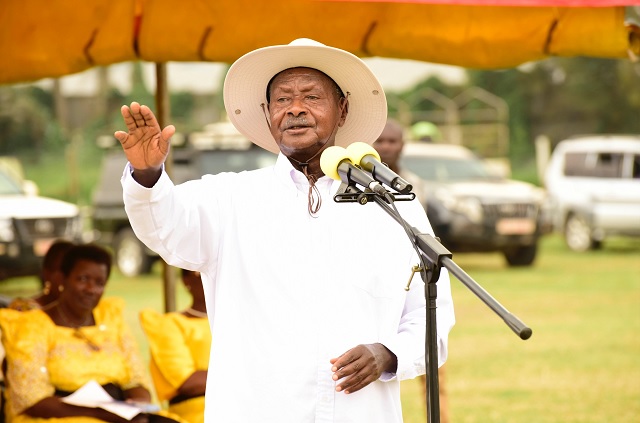
Kiir the centre of trouble
Even as the bickering continues around South Sudan, at the heart of the failure to come to any lasting solution for peace is its heavily bearded and hat-spotting 68-year-old leader, Salva Kiir Mayardit.
He assumed power after the death of John Garang in a helicopter crash in 2005 when the country was still under Sudan. Since South Sudan achieved independence in 2011, he has exercised absolute power and crushed dissent mercilessly.
Analysts say he has failed to be a unifying figure for the nation at any time and has instead actively sabotaged the many peace agreements signed. Reports say Kiir fears a genuine peace pact with Machar will weaken his stranglehold on power.
In December 2016, for example, Kiir announced a national dialogue as a way of calming tensions in the divided nation. South Sudanese however did not warm up to it because Kiir was presiding over it and secondly there was war going on and many argued that it was pointless to have dialogue when there is no security for the people.
Reports indicated that the dialogue stood a chance if South Sudanese had had a more acceptable and impartial leader to preside over the process.
Many analysts see the South Sudan conflict as a migraine that refuses to heal. The more treatment is applied to it, the more stubborn it gets. The international community; led by the United Nations, has proffered a range of solutions from peace agreements, arms embargoes, holding elections, to negotiations for a broad based government. None have worked for this country, which became the world’s newest nation on July 9, 2011 when it seceded from Khartoum.
Now, the international community may just be watching events in South Sudan as another deadline of forming a unity government counts down.
There is little hope for peace and frustration is growing over the likelihood of war breaking out in South Sudan because deadlines are not met and agreements are not respected. The transitional government was supposed to be formed in May but Machar asked for more six months and it was granted by IGAD.
Machar is more wary given that SPLM-IO has divisions in its ranks after Kiir appointed Taban Deng Gai, a former chief negotiator of SPLM-IO as vice-president in 2016. Since then, some members of SPLM-IO have been squabbling accusing Deng Gai of betrayal while others have backed him.
Machar has only been to Juba twice this year, most recently on Oct.14 at the launch of the South Sudan peace talks. The function was attended by regional leaders and overseen by Ethiopian Prime Minister Abiy Ahmed as the current chairperson of IGAD.
At this rate, no amount of time granted may provide assurance to Machar and his associates or create the ideal conditions for a safe haven in Juba. Machar and his advisors say there should be more attention paid to the issue of cantonment for government troops as stipulated by the 2018 agreement.
Judging from the mistrust and suspicion between Kiir and Machar and their loyalists, it is unlikely that the deadline will be met. Machar lives in Khartoum, Sudan and has avoided Juba due to reservations about his personal security.
Next month will mark six years since war broke out in South Sudan. It was just two years after independence. The conflict has claimed 500,000 lives, and displaced over 2 million people.
Today, some of the same refugees and more from the conflict between Kiir and Machar are reported to be under recruitment as fighters which fuels violence.
That is why regional leaders who suffer the after effects of turmoil whenever South Sudan erupts into armed conflict desperately want peace. Uganda which is next door to South Sudan and bears the heaviest burden of refugees is equally pushing for peace. Unfortunately, strong language from Museveni might not be all that South Sudan needs.
****
 The Independent Uganda: You get the Truth we Pay the Price
The Independent Uganda: You get the Truth we Pay the Price



South sudan includes the vast swamp region of the Sudd, formed by the White Nile and known locally as the Bahr al Jabal. The modern states of South Sudan and Sudan were part of Egypt under the Muhammad Ali Dynasty, later being governed as an Anglo-Egyptian Condominium until Sudanese Independence was achieved in 1956 from Great Britain leaving Lado which was one time under the Governor General Sir Samuel White Baker who was appointed by the Khedive of Ottoman – Egypty Ruler to adminster LADO as his Private owned Territory. After Great Britain together with the Ottoman ruling power over Egypt which still later got its Independence in 1923 becoming Independent Egypt, Great Britain still wanted to fully occupy Lado in their best Interest for the Europeans to occupy the Heart of Africa under the direction of Great Britain only —–, the former Lado – Equaroria Province of Egypt under the Ottoman Empire.
South Sudan issue can not be solved without including the Lado Political issue in Mother Continent Africa
The rest of story of Lado His – or its Story Lines , one can read on the web site views on Lado whereby King Leopold II got involved to take over Lado to be under him when the Europeans created later to colonise the whole Continent of Africa by the Berlin Confrence held in from 1882 – and concluded in 1885 at Berlin. Write more later